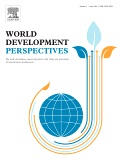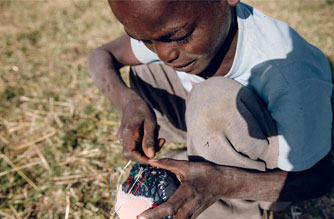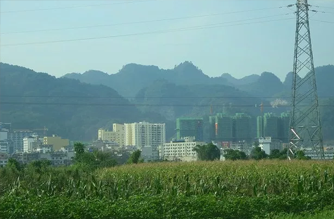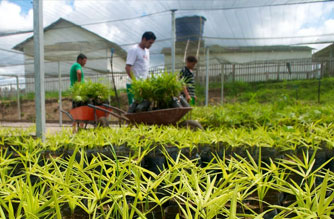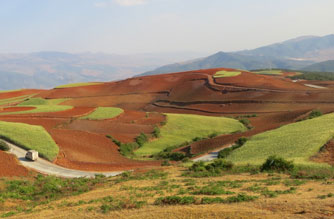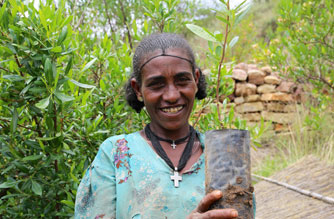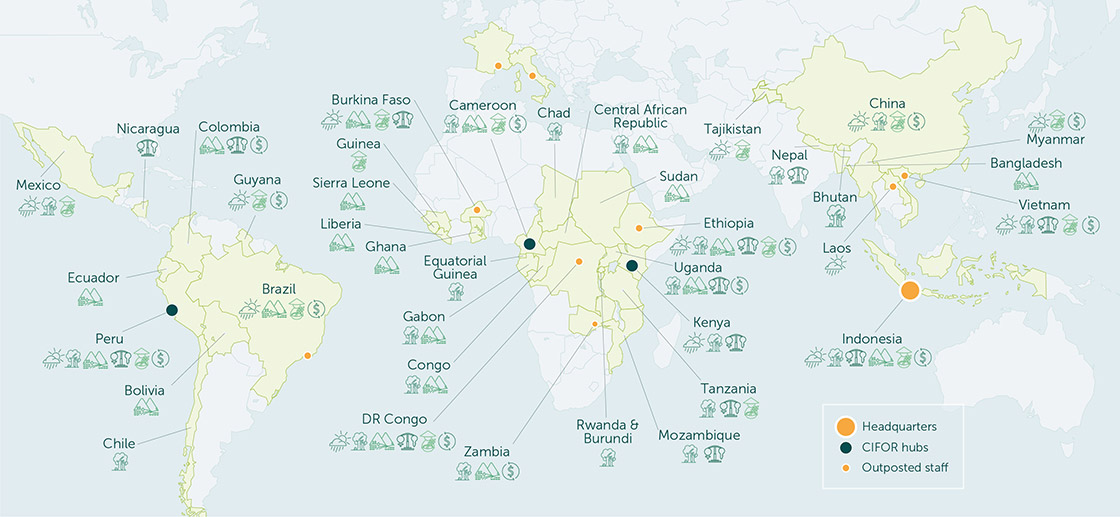
How to reach global goals while meeting local needs
Lessons from forest landscape restoration in Asia and Africa
Nearly 20 years after devastating floods hit China’s Yangtze and Yellow River basins, the landscape has been transformed. Deforestation on the steep hillsides set in train a perfect storm of events in 1998 when drought was followed by heavy rains. Thousands of people lost their lives and at least 13.2 million people were displaced, amid widespread erosion damage.
The Chinese Government responded swiftly, setting up the Conversion of Cropland to Forests Program (CCFP), the world’s largest payment for ecosystem services reforestation initiative. Since 1999, upstream farmers have restored 30 million hectares of sloping lands with trees and grasses in 25 Chinese provinces, in exchange for seeds, training and subsidies to cover lost farm income.
As countries around the world rise to the Bonn Challenge of restoring 150 million hectares of forest by 2020, China’s experience holds valuable lessons on how to attain global targets while safeguarding rural livelihoods.
In 2016, as part of the DfID KNOWFOR-funded Sloping Lands in Transition (SLANT) project on forest landscape restoration, CIFOR brought together Chinese, Nepali, Ethiopian and global researchers in Addis Ababa, Ethiopia and Beijing, China to share insights from the CCFP, Nepal’s community forestry initiatives, and Ethiopia’s experiences with exclosures and participatory restoration models.
Restoration is learning by practice. You can’t define it from the start, but need to learn it step by step. To learn that you need to monitor, and document it for the next generation.
Emiru Birhane, PhD, Professor at Mekelle University, Ethiopia, on drawing lessons from China’s experience
Applying a gender lens
Ensuring that agencies have clear, useful data is the first step to creating programs that are balanced and fair. CIFOR’s gender team helped develop new questions and methods for China’s national monitoring surveys to paint a clearer picture of what helps or hinders access to benefits for women, youth and minority groups.
Spreading the word
CIFOR scientists shared insights from their research on the CCFP and from the meetings in Ethiopia and China at global conferences throughout 2016.
- International Union for Conservation of Nature World Conservation Congress
- IUFRO Asia-Oceania regional congress
- SLANT video presentations
It is really time for developing countries to learn from each other‘s experiences in forest landscape restoration... and discuss their cooperation.
Xie Chen, PhD, FEDRC, on a IUFRO Asia-Oceania conference panel
Tracking progress
In 2013, CIFOR was invited to partner with the China National Forest Economics and Development Research Center (FEDRC), the think tank responsible for monitoring and evaluating the program’s impacts, to support the analysis of their nationwide dataset and offer policy recommendations. Results from this collaborative effort are summed up in a systematic review published under CIFOR’s Evidence-based Forestry Initiative.
Read the research
Supporting links to new knowledge
More information is needed about factors that may affect smallholders’ willingness to abandon farming on cleared slopes and instead gain their livelihood through trees over the long term. Policy makers are also keen to know more about the effects of CCFP on climate change mitigation and adaptation, conservation and ecosystem services.
With support from FEDRC and the State Forestry Administration, CIFOR established a partnership with the National Science Foundation of China. In 2016, the Foundation created a new funding instrument for Chinese scientists to collaborate with CIFOR on research related to forest landscape restoration, through an annual call for proposals for up to $500,000 per project.
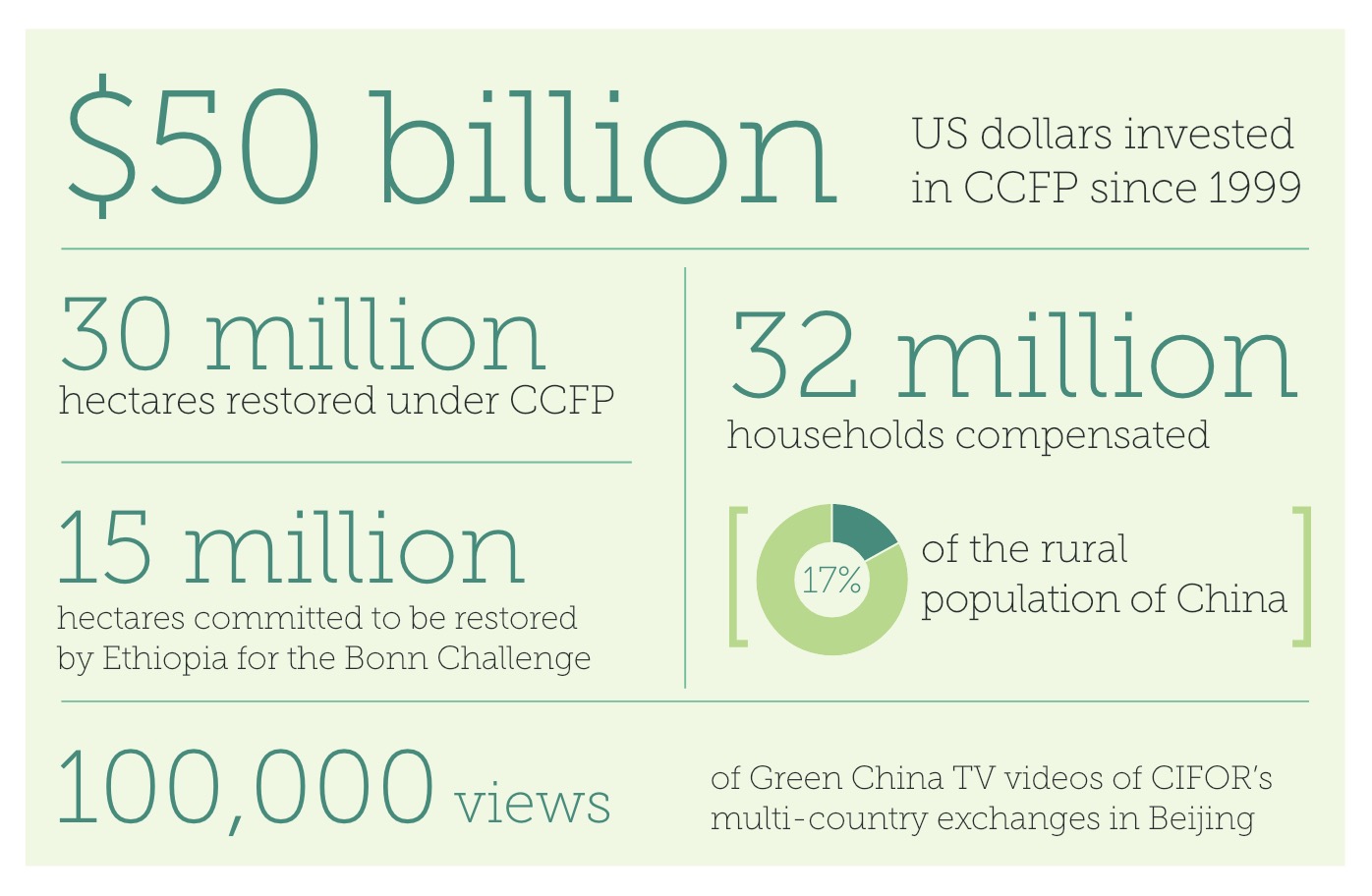
Photo by L. Putzel/CIFOR.





